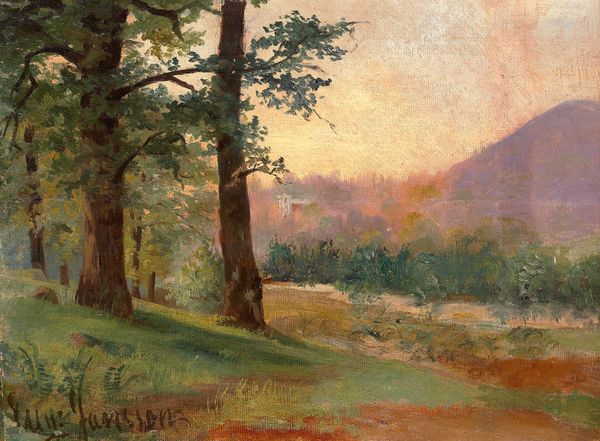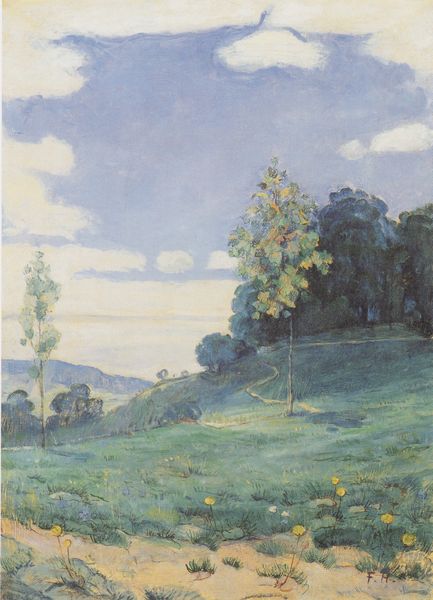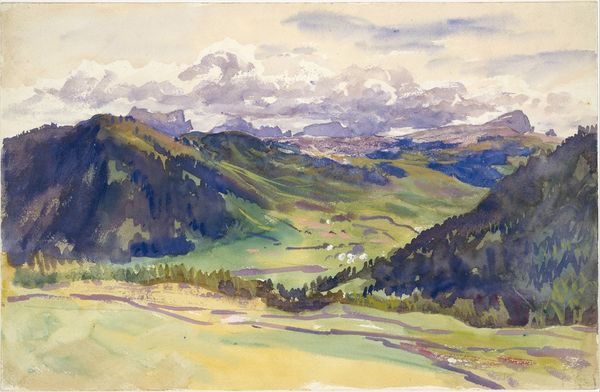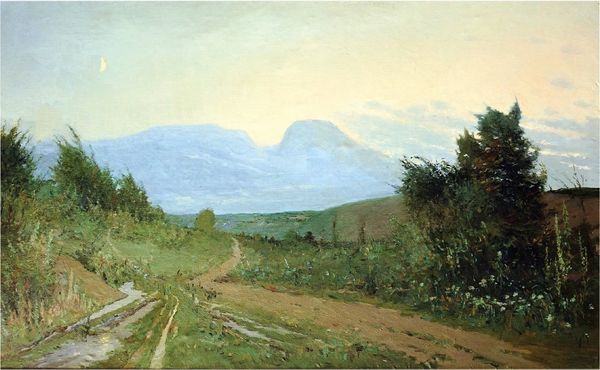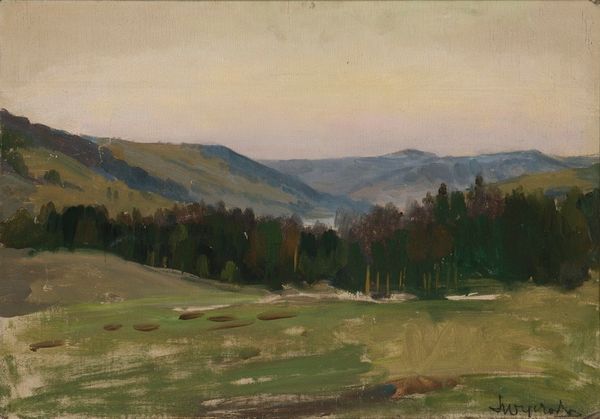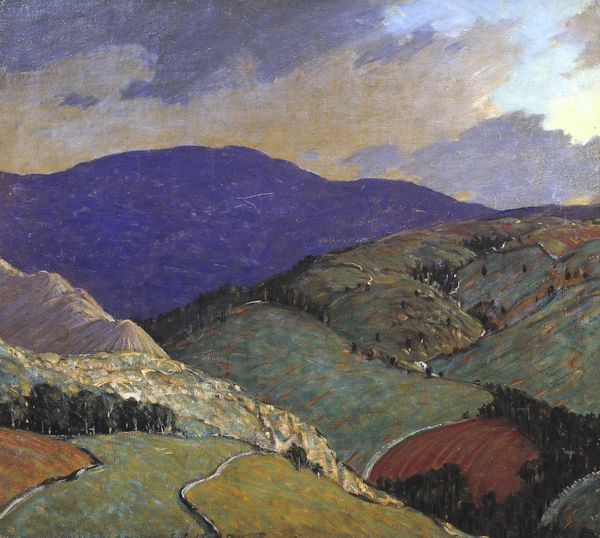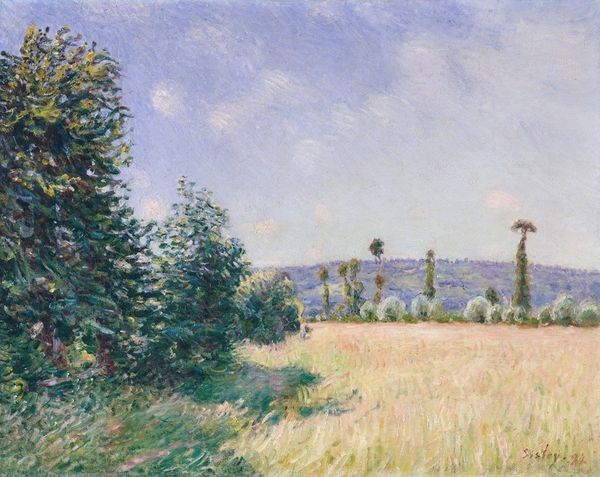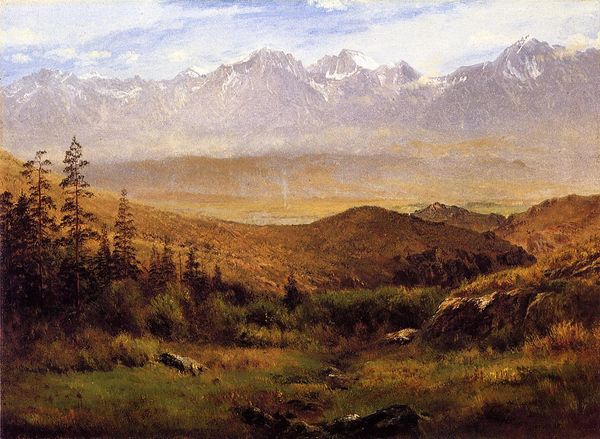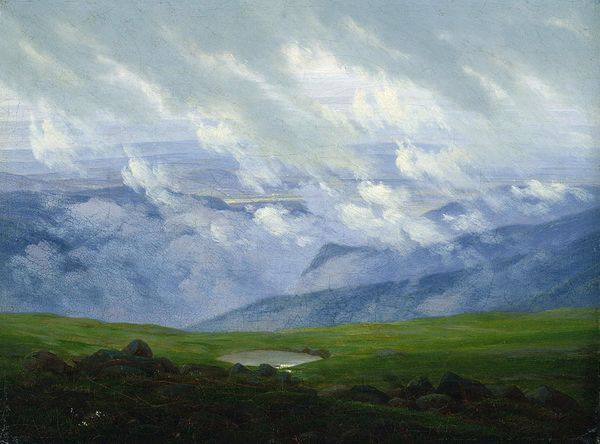
plein-air, oil-paint
#
sky
#
impressionism
#
plein-air
#
oil-paint
#
landscape
#
impressionist landscape
#
oil painting
#
mountain
#
realism
Dimensions: 60.6 x 48.5 cm
Copyright: Public domain
Curator: Welcome. Before us, we have "Paisagem," by Alfredo Andersen, a striking example of his plein-air painting. Editor: My first impression is one of serene spaciousness. The way the eye is led from the vibrant foreground up toward the pastel mountains gives it such depth. Curator: Andersen's legacy is significant, particularly in the context of the Paraná artistic scene, where he helped establish a European-influenced style within a distinct Brazilian sensibility. Think of the shifting cultural values of early 20th century Brazil as industrialisation expanded. Editor: The brushstrokes! Look how the loose dabs of paint create such varied textures—the rough bark of the trees, the soft grass. He's clearly interested in light, almost an impressionistic feel. How do you think this approach was received at the time? Curator: Realism remained dominant but Andersen was also deeply involved in debates of national identity. Remember he trained and worked primarily as a craftsperson before finding patrons to fund a change into the Fine Arts as such. He becomes such an interesting bridge between traditional academic circles and artists interested in modernisation. Editor: I see that interplay so clearly in his depiction of the mountains – soft focus compared to the foreground. Does the formal arrangement here reinforce what you describe as a negotiation between tradition and modernism? Curator: Absolutely. Andersen provides what are meant to be perceived as truthful impressions of nature—these plein air paintings were shown mostly at very formal art salons. How subversive do we consider art to be if it operates on two contradictory registers? Editor: Perhaps subversion wasn't always the only intention. There's a calming tranquility to this scene. You forget its positioning or its historical negotiation. Andersen seems simply to want the viewer to appreciate nature's grandeur. Curator: And to appreciate it with certain visual traditions, framed by debates in Brazilian culture! Hopefully we can agree to look beyond face-value in order to fully grasp this historical positioning. Editor: A beautiful piece, and you've certainly enriched my understanding. Thank you.
Comments
No comments
Be the first to comment and join the conversation on the ultimate creative platform.

